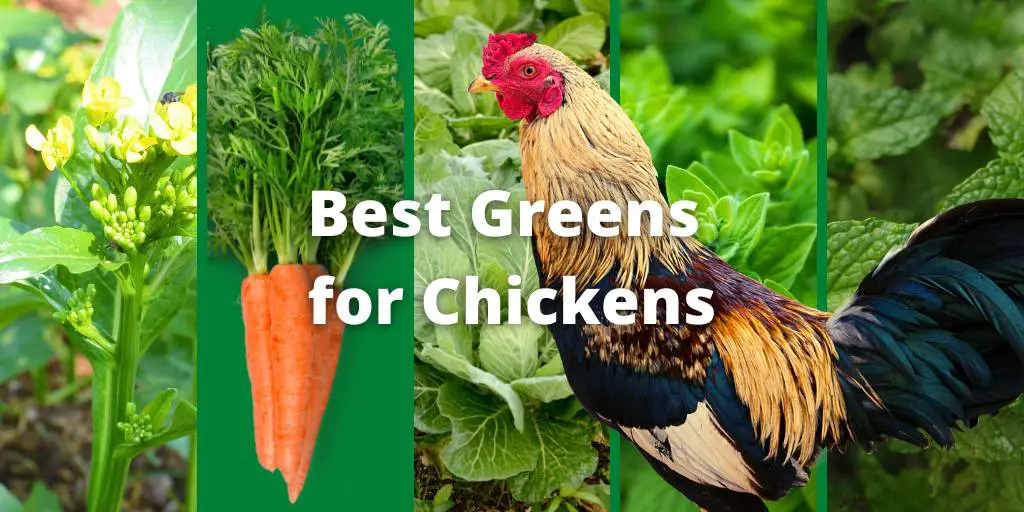Giving the best greens to chickens will help them fulfill their nutrition needs. You are curious about what the best green vegetables you can feed to your chickens?
Healthy chickens are happy chickens, and one of the best ways to keep your flock healthy is to give them different nutritious foods.
Chickens require a balanced diet with plenty of fresh greens, while most will happily peck away at their feed pellets all day long.
But what types of greens should you feed to your chickens?
What types of green vegetables can you grow for your chickens?
- COMPLETE VARIETY PACK: 20 premium heirloom lettuce...
- ABUNDANT HARVEST: 21,600+ high-germination seeds with...
- VERSATILE GROWING OPTIONS: Suitable for outdoor garden...
- PREMIUM USA QUALITY: All seeds sustainably sourced in...
- PERFECT GIFT CHOICE: Ideal present for gardeners,...
Last update on 2025-09-15 / Affiliate links / Images from Amazon Product Advertising API
Here is a list of the best greens for chickens, their health benefits, and the best ways to grow them in your garden.
Also read: List of 100+ Chicken Treats
17 Best Greens For Chickens To Feed Your Flocks
Below are a few amazing green vegetables that you can grow for your chickens:
1. Lettuce

Lettuce is a cool season vegetable with vitamins A and C and many B vitamins. It is also rich in calcium, manganese, potassium, and magnesium.
Lettuce also provides your chickens with dietary fiber, which helps to keep their digestive system healthy and functioning properly.
While lettuce can be grown year-round if properly protected from the elements (with hoop houses or cold frames), it grows best when planted in spring or fall.
2. Broccoli and Its Leaf
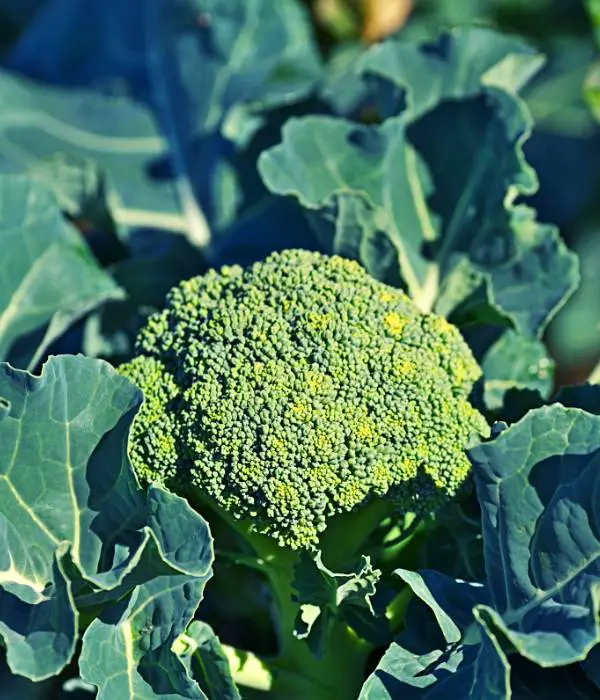
The broccoli is a cool-season vegetable that can be grown through early fall and winter, even in cold climates. Broccoli is high in calcium and Vitamins A, B6, and C.
It also contains essential minerals such as magnesium and potassium. It also contains sulforaphane, a compound that can help reduce inflammation in chickens.
Like lettuce, broccoli should be grown in early spring or fall to get the most nutrients possible. You can also feed broccoli leaves by cutting them into small pieces.
Broccoli plants can also be grown year-round in a greenhouse if protected from frost. Also, it is easy to feed your chickens using a toy.
3. Kale
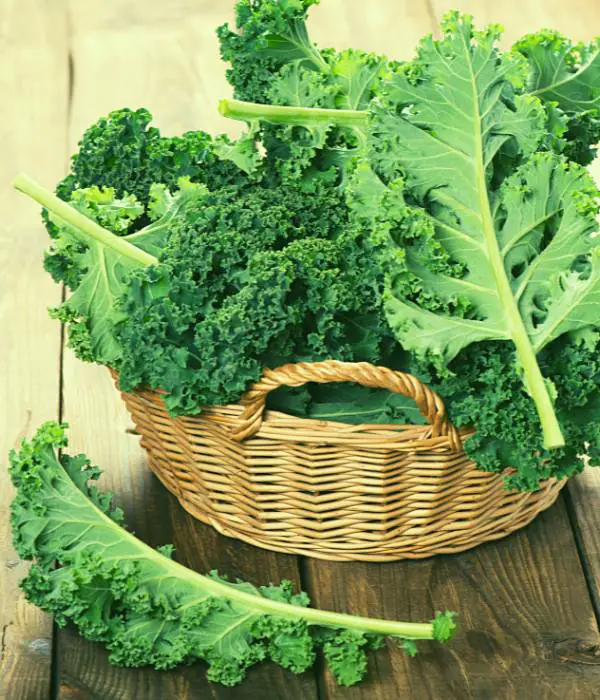
Kale is another great green vegetable for chickens with many of the same nutrients found in broccoli and lettuce, including Vitamins A, B, C, and K.
It is packed with calcium, potassium, magnesium, and iron. It can be served raw or cooked to chickens, but not overcooked, as this will destroy many beneficial nutrients.
While kale can be grown year-round in a greenhouse or indoors using grow lights, it is best when planted in mid to late spring for summer and fall for winter harvests.
4. Parsley
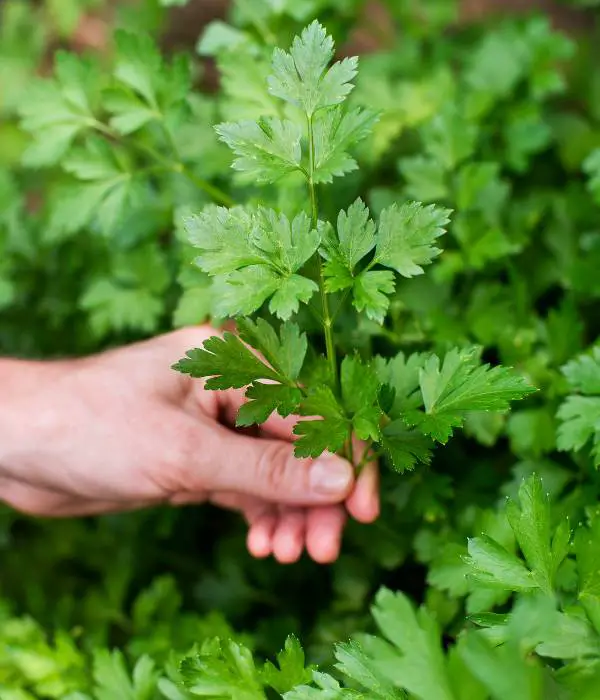
Parsley is high in Vitamins C and K and iron and calcium. Like broccoli and kale, it belongs to the cabbage family.
Parsley can be grown year-round in a greenhouse or indoors using grow lights. Chickens love to peck on parsley leaves.
It also contains vitamin A and folate, which helps maintain healthy eyesight in chickens and aid growth. It also contains other beneficial minerals such as magnesium, iron, and zinc.
To get the most out of parsley, it should be harvested when it is young and tender.
5. Cilantro
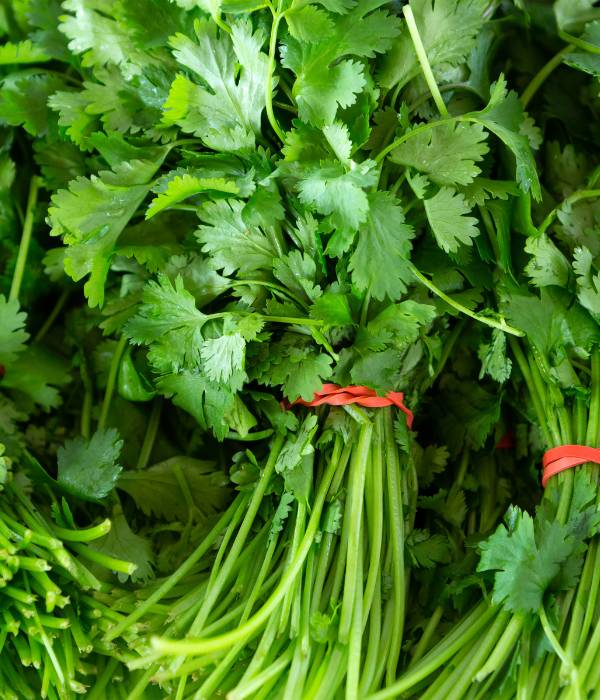
Cilantro is one of the best green vegetables for chickens because it contains all the vitamins and minerals chickens require in moderate amounts.
It is a great source of vitamin K, which helps promote bone and feather health in chickens.
It also contains other beneficial minerals such as potassium, magnesium, and zinc. You can grow cilantro all year round in a greenhouse or indoors using grow lights.
6. Oregano
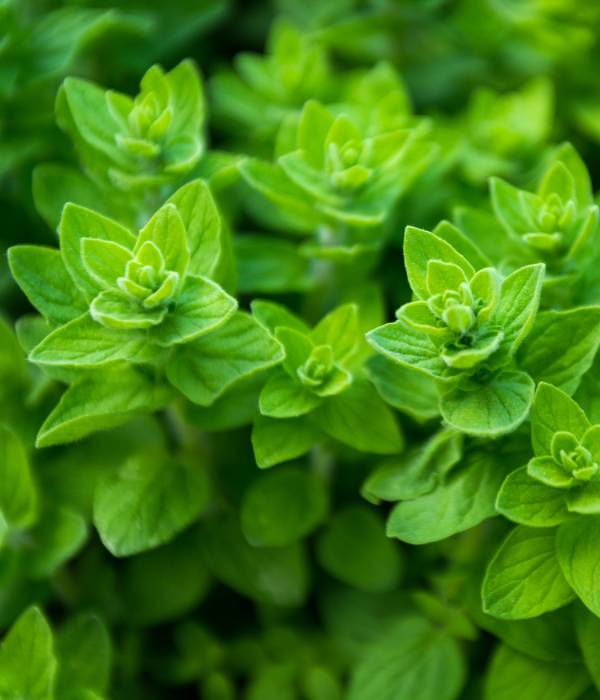
Oregano is another member of the cabbage family with many of the same nutrients found in broccoli and lettuce, including Vitamins A, B, C, and K.
It is packed with calcium, potassium, magnesium, and iron. Oregano also has antioxidants and disease-fighting compounds.
It can be grown in a pot or greenhouse at a moderate temperature.
7. Basil
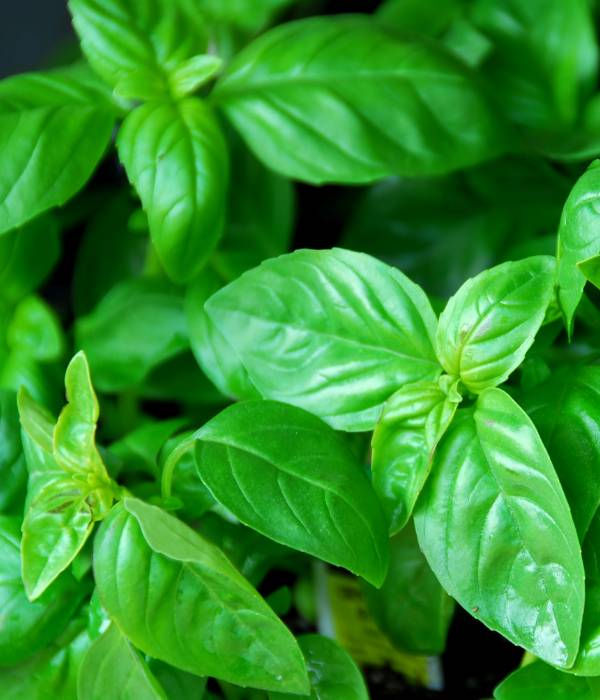
Basil is one of the most flavorful herbs that chickens enjoy, making it one of the best greens for chickens.
Since it is a member of the mint family, it provides your chicken with some of the same antioxidants found in many fruits and vegetables.
It is also high in Vitamins A and C, essential for healthy vision and overall health. Basil is a warm-season vegetable that can be grown from early spring through late fall.
8. Mint
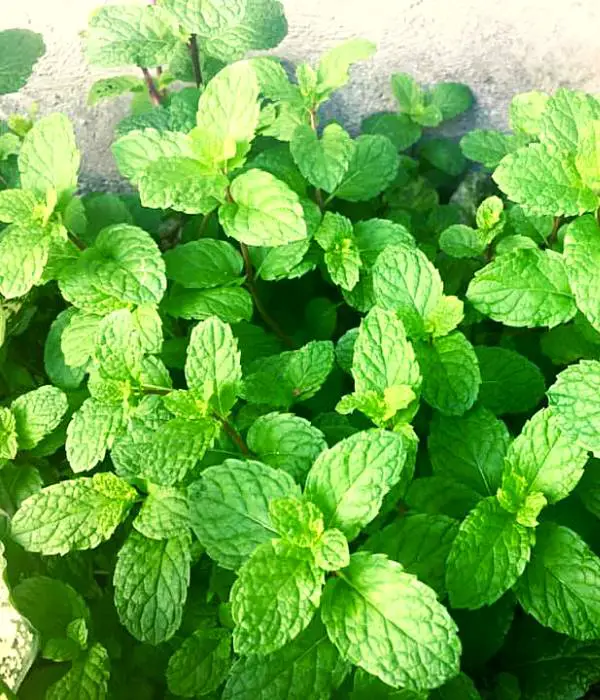
It is another member of the mint family with flavors that chickens enjoy and other health benefits. Mint is a great source of vitamin A, which helps with eye and skin health and aiding growth in chickens.
The mint has high levels of Carotenoids that help fight free radical damage. It is best to be careful when adding large amounts of mint to a chicken’s diet because it can be quite spicy.
Like other mints, it contains essential oils that can aid digestion and help eliminate toxins from chickens’ bodies. Mint can grow all year round with proper care and can also be grown indoors as houseplants.
9. Swiss Chard
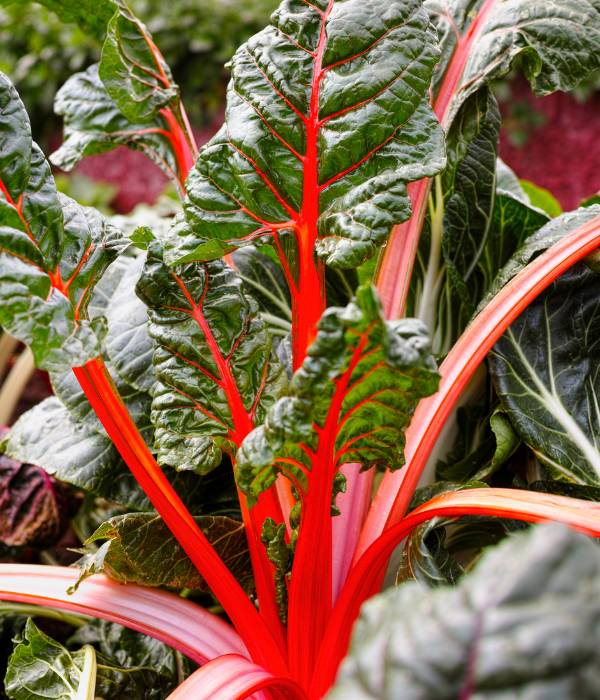
Like other members of the cabbage family, Swiss Chard is a great source of vitamin C, which helps promote optimal bone health in chickens.
It also contains other beneficial vitamins and minerals such as B6, iron, fiber, vitamin K, magnesium, and potassium.
Swiss Chard is also a great source of fiber and protein. It can be added to your chickens’ diet as a leafy green or cooked as a vegetable.
Chard can be grown all year round in a mild climate, although it is best planted in spring or fall.
10. Cucumber
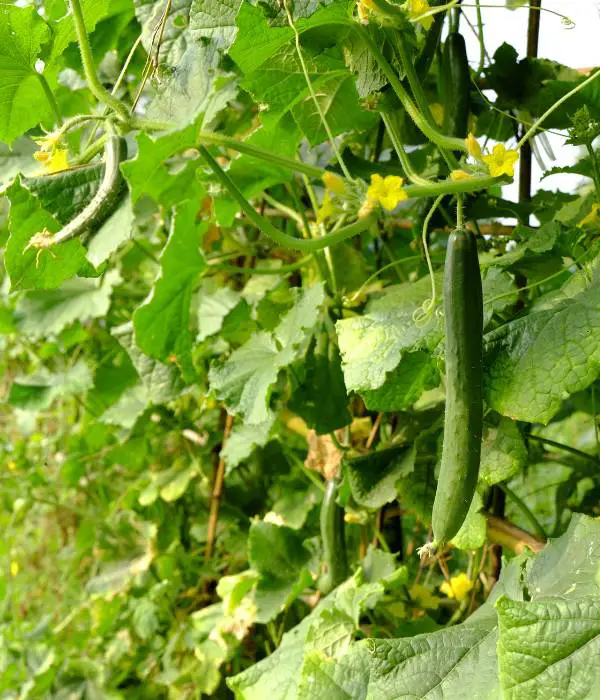
Cucumber is the perfect green vegetable, especially if your chickens are struggling with drinking water. This is because it is 96% water, which help chickens to rehydrate.
Cucumbers have many of the same nutrients found in broccoli and lettuce, including Vitamins A, B, C, and K.
It is packed with calcium, potassium, magnesium, and iron. It can also aid in digestion and prevent constipation. Vitamin A in cucumber helps with eye and skin health and aiding growth in chickens.
Cucumbers are also a great source of folate and should be used in moderation as this helps maintain healthy vision, skin, and reproductive systems.
(Buy Cucumber Seeds For Planting)
11. Turnip Greens
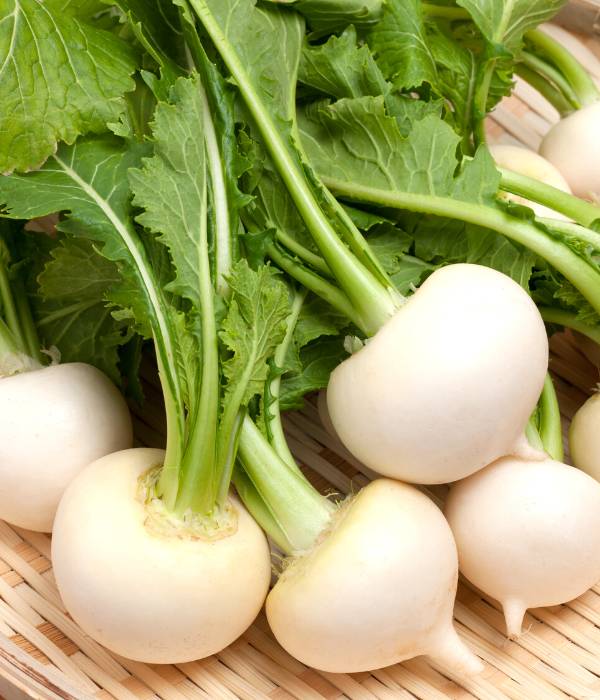
Turnip greens are a great source of Vitamins A and C, which help maintain healthy skin, vision, and immune systems.
They are packed with vitamin K, which promotes bone and feather health in chickens.
Turnip greens can be grown all year round, from spring to fall, depending on the climate. They can also be grown indoors as houseplants.
12. Collard Greens
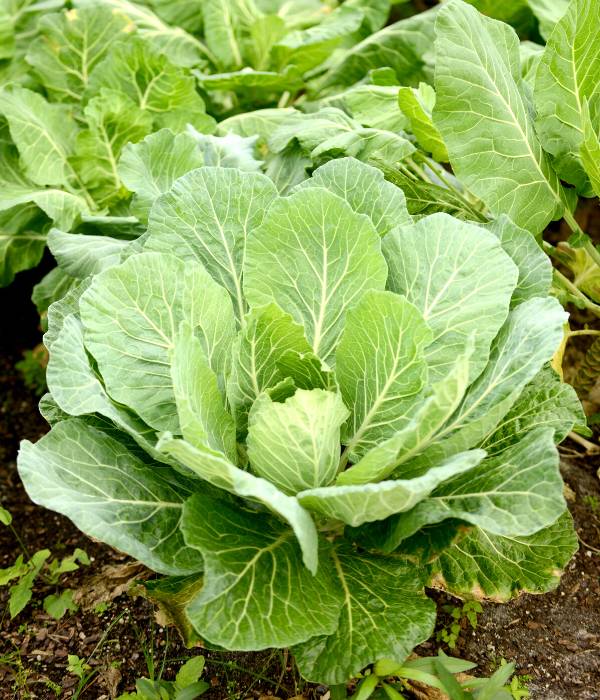
Are you looking to include more greens in your chickens’ diet? Collard greens are a great addition. High in vitamin K and vitamin A, they provide numerous health benefits for your chicken.
They are packed with calcium, potassium, magnesium, and iron, which promote healthy bone and feather growth in chickens.
Collard Greens are also a perfect source of fiber and protein, making them a nutritional powerhouse. Collard greens can grow anywhere as long as there is enough water and sunlight.
13. Mustard Greens
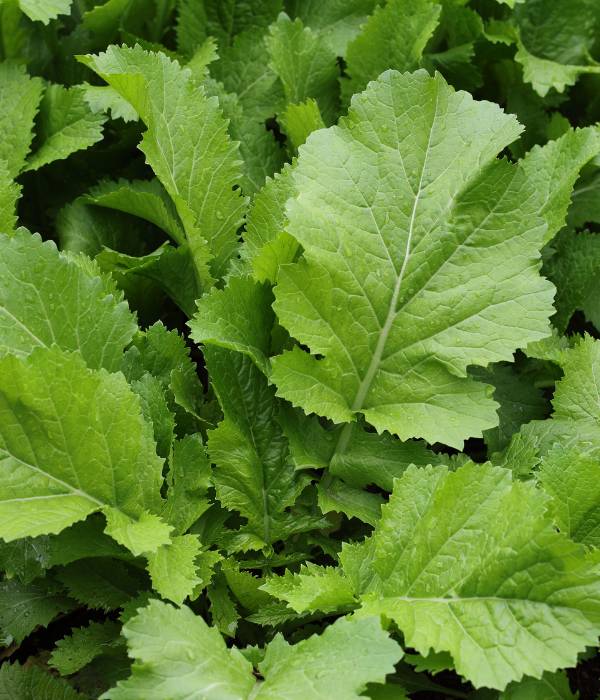
Like turnip greens, mustard greens are packed with vitamins K and B6, which help promote bone and feather health in chickens. Mustard greens should be fed to chickens sparingly because they can be quite spicy.
Like other members of the cabbage family, mustard greens can help eliminate toxins from chickens’ bodies while providing them with many essential minerals.
Mustard greens comprise potassium, magnesium, iron, zinc, and calcium. Mustard greens can be grown all year round, from early spring through the fall.
14. Radish Green Tops
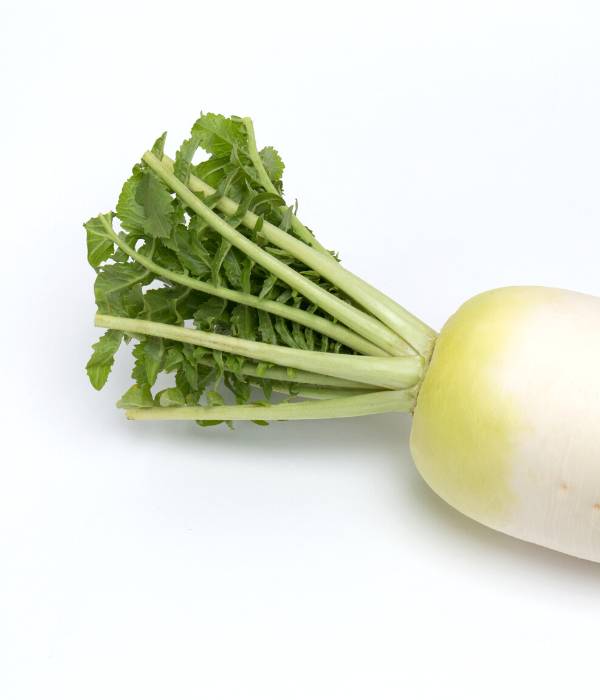
Radishes are among the tastiest members of the cabbage family. Radish green tops contains vitamin C, which helps boost the immune system and fights off disease in chickens.
Radishes can help balance chickens’ digestive systems by helping eliminate toxins from their bodies. They can be grown in the garden or a pot indoors.
(Buy Radish Seeds For Planting)
15. Carrot Green Tops

Carrot green tops contain vitamin A, perfect for eye and skin health and aiding growth in chickens. It also contains other beneficial vitamins and minerals such as B6, iron, fiber, calcium, and potassium.
Carrot greens can be used in many ways, from snipping them up with a knife to using them raw. Carrots are very nutritious and a good source of Vitamins A, dietary fiber, and C, and multiple antioxidants.
Carrots are a great source of metabolism-boosting vitamin B, which helps chickens burn excess fat and maintain their ideal weight.
It is good to feed your chicken carrots green tops while fresh, but they can also be added to your chickens’ diet as a cooked vegetable.
16. Asparagus

Asparagus is a good source of vitamin C, which helps promote optimal bone health in chickens. It also contains other beneficial vitamins and minerals such as vitamin A, iron, fiber, potassium, magnesium, and manganese.
Asparagus is a good source of selenium, which helps your chickens fight off diseases and prevent cancer. Asparagus should be fed to your chickens sparingly due to its excessive calorie and sodium content.
You can grow Asparagus in both indoor and outdoor areas, but it is best grown outdoors in the cool months of spring through fall.
17. Cabbage
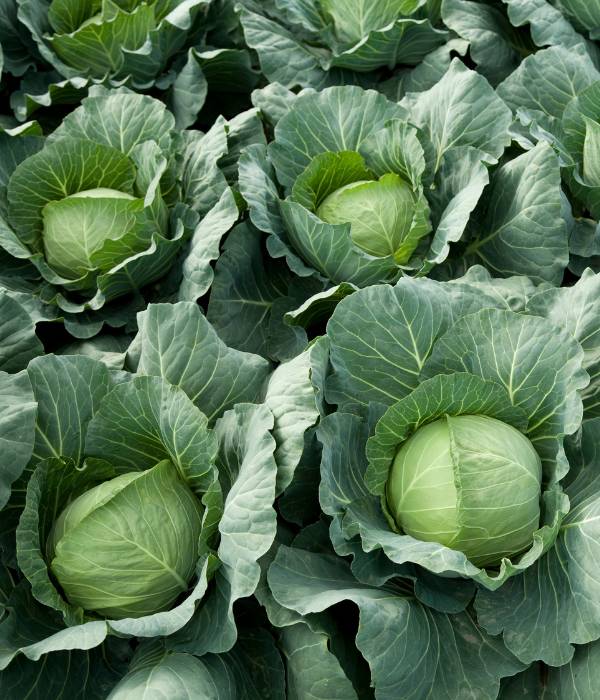
Cabbage is a great source of fiber, which promotes digestive health in chickens. It also contains other beneficial vitamins and minerals such as B6, iron, and vitamin C.
Cabbage is a great source of calcium, potassium, and magnesium, which aids in bone growth and feather development in chickens. Like other members of the cabbage family, cabbage can help support healthy vision and skin health.
Cabbage is also a great source of vitamin A, which helps with eye and skin health and aiding growth in chickens. Cabbage should be grown in full sun and harvested before the heads are fully developed.
The leaves should be chopped up to make it easier for chickens to eat. To maximize nutrition, cabbage should not be overcooked, as this will destroy many of the beneficial nutrients.
How to give green veggies to chickens?
There are many ways to give green veggies to chickens. Here are some of the most popular ways:
1. Chop Up Greens and Feed
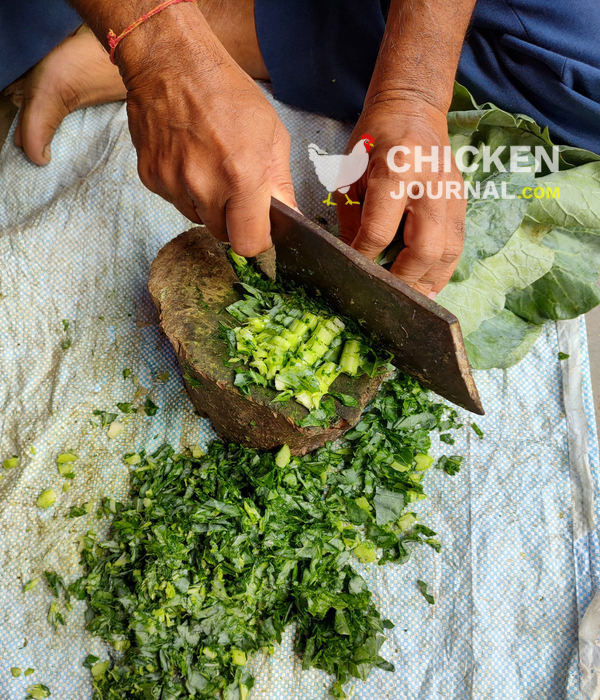
One of the easiest, most convenient ways to give chickens greens is by chopping them up and feeding them to your chickens. The leaves can be chopped up with a knife or scissors, or snipped off with your fingers.
Next, they should be added to the chicken’s box. This allows you to feed your chickens green veggies easily and provide a fun activity for you and your chicken.
You can also scatter the pieces on the Ground for them to pick at, or offer them in a bowl with some water.
If given dried greens, make sure to soak them first in warm water to rehydrate them. This will make them easier to eat and digest for the chickens.
2. Mixing Greens into the Box
Mixing greens and other healthy foods into their daily diet is an easy and convenient way to give your chickens a salad.
Using a 1:1 ratio, mix equal amounts of greens with other foods, such as seeds and pellets.
This allows the greens to be digested easily and make it possible for your chickens to receive the nutrients in the greens.
Adding different ingredients makes it easy for your chickens to obtain maximum nutrition from their greens.
3. Sprinkling on the Ground
Another easy and convenient way to feed your chickens green foods is by sprinkling them on the Ground or over their food bowl.
This allows your chickens to roam around the yard and peck out whatever greens they want. This option is especially useful if you are unsure how your chickens will react to various greens in their diet.
4. Foraging Greens
Another great way to give your chickens green foods is by allowing them to forage for them in their spare time.
This can be done by planting a few different greens in your yard or keeping some planters of vegetables outdoors.
If this doesn’t apply to you, you can also scatter greens throughout the yard and allow them to forage. Watching them roam about and pick out what they like will be entertaining.
Final Thoughts
Green vegetables for chickens are a great way to supplement their diet and get them to eat healthily.
Fresh green veggies add extra vitamins, minerals, and fiber to the already healthy eggs from chickens.
Feeding chicken greens will help improve egg nutrition, but there are other sources of nutrition that your hens require.
Different types of greens have different beneficial minerals, so it is important to include a variety of them in your flock’s diet.
If you have chickens in your backyard or keep them as pets, use this guide to ensure that they are well-nourished and get the most out of their meal.
I hope this guide helped you to choose a few of the best greens for your chickens to grow.
